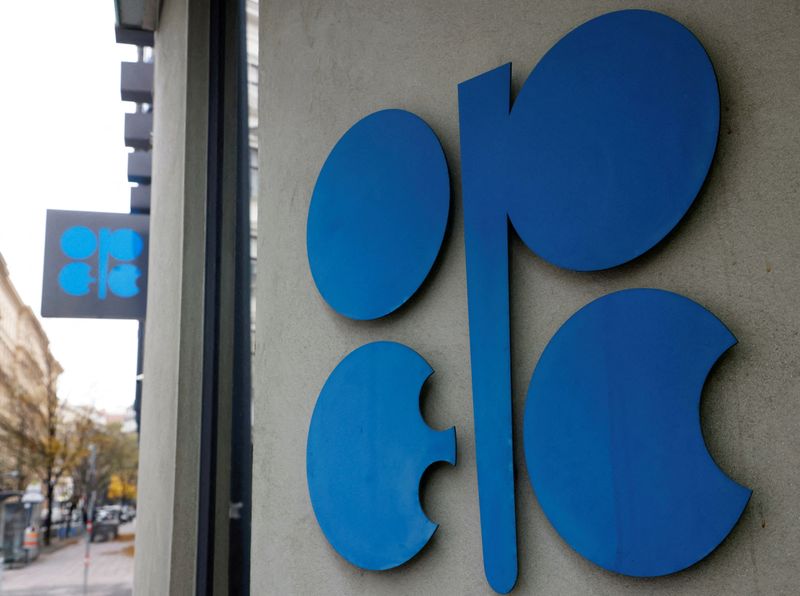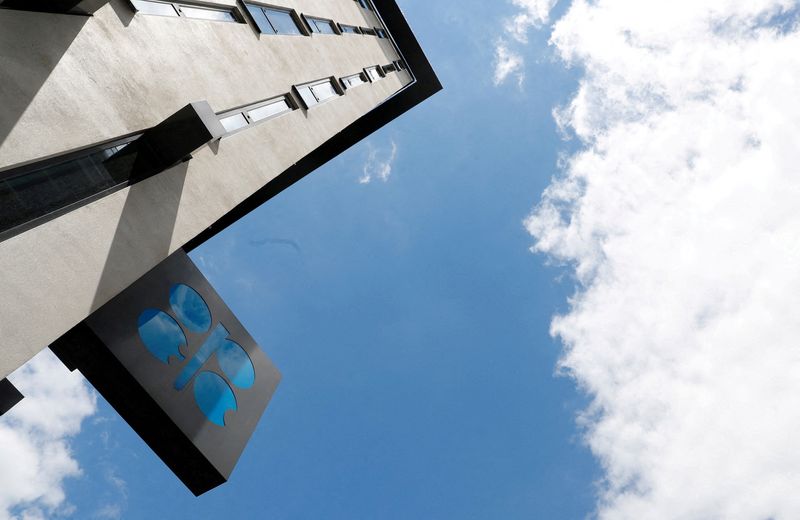Commodities
OPEC+ extends deep oil production cuts into 2025

By Ahmad Ghaddar, Alex Lawler and Maha El Dahan
LONDON/DUBAI (Reuters) -OPEC+ agreed on Sunday to extend most of its deep oil output cuts for 2024 but to start phasing them out in 2025, as the group seeks to shore up the market amid tepid global demand growth, high interest rates and rising rival U.S. production.
Oil prices trade near $80 per barrel, below what many OPEC+ members need to balance their budget. Worries over slow demand growth in top oil importer China have weighed on prices alongside rising oil stocks in developed economies.
The Organization of the Petroleum Exporting Countries and allies led by Russia, together known as OPEC+, have made a series of deep output cuts since late 2022.
OPEC+ members are currently cutting output by a total of 5.86 million barrels per day (bpd), or about 5.7% of global demand.
The cuts include 2 million bpd by all OPEC+ members, the first round of voluntary cuts by nine members of 1.66 million bpd, and the second round of voluntary cuts by eight members of 2.2 million bpd.
OPEC+ extended the the first round of cuts until the end of 2025 from the end of 2024, the group said in a statement.
It also agreed to extend the third round of voluntary cuts into the third quarter of 2024, OPEC+ sources said, adding that more details were being worked out and would be announced on Sunday.
The countries which have made voluntary cuts in the second round are Algeria, Iraq, Kazakhstan, Kuwait, Oman, Russia, Saudi Arabia and the United Arab Emirates and Gabon. The same countries except Gabon participated in the third round.
The group also agreed to allocate the United Arab Emirates a higher production quota of 3.5 million bpd in 2025, up from the current level of 2.9 million.

OPEC+ also postponed the deadline for an independent assessment of its members’ production capacities to the end of November 2025 from June 2024. The figures will be used as guidance for 2026 reference production levels.
OPEC+ will hold its next meeting on Dec. 1, 2024.
Commodities
Oil prices rise; U.S. crude inventories plunge, Russia-Ukraine truce eyed
Commodities
India’s Reliance to stop buying Venezuelan oil over US tariffs, sources say
Commodities
Oil prices climb on Venezuela supply worries

 Forex3 years ago
Forex3 years agoForex Today: the dollar is gaining strength amid gloomy sentiment at the start of the Fed’s week

 Forex3 years ago
Forex3 years agoUnbiased review of Pocket Option broker

 Forex3 years ago
Forex3 years agoDollar to pound sterling exchange rate today: Pound plummeted to its lowest since 1985

 Forex3 years ago
Forex3 years agoHow is the Australian dollar doing today?

 Cryptocurrency3 years ago
Cryptocurrency3 years agoWhat happened in the crypto market – current events today

 World3 years ago
World3 years agoWhy are modern video games an art form?

 Commodities3 years ago
Commodities3 years agoCopper continues to fall in price on expectations of lower demand in China

 Economy3 years ago
Economy3 years agoCrude oil tankers double in price due to EU anti-Russian sanctions























